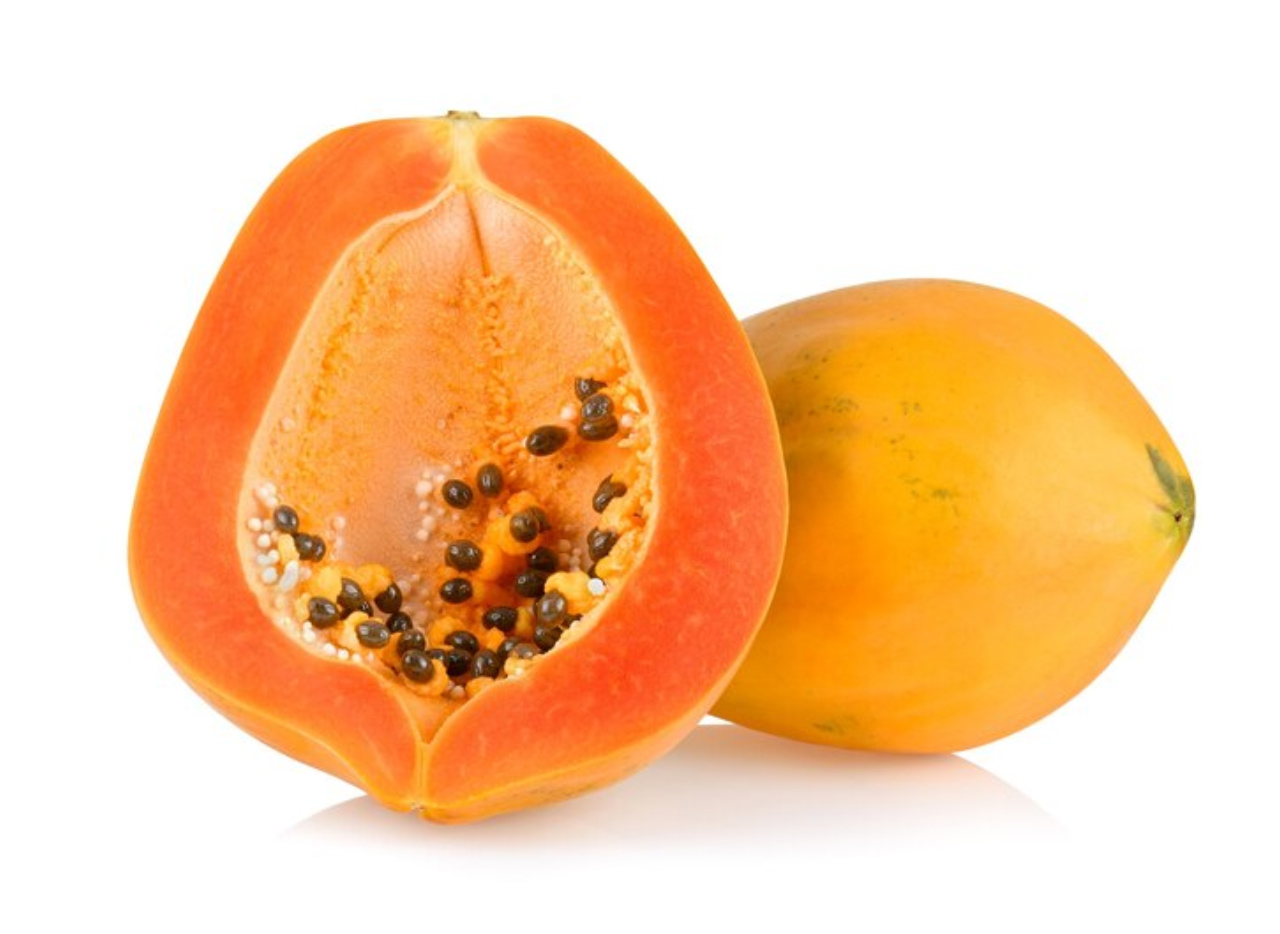 Although there is a slight seasonal peak in early summer and fall, papaya trees produce fruit year round.
Although there is a slight seasonal peak in early summer and fall, papaya trees produce fruit year round.
- Papaya gives you glowing skin
- Helps in digestion
- Papaya leaves increase the appetite in your body and cures menstrual pain
- It is used for weight loss treatment
Nutrition
Raw papaya pulp contains 88% water, 11% carbohydrates, and negligible fat and protein (table). In a 100 gram amount, papaya fruit provides 43 kilocalories and is a significant source of vitamin C (75% of the Daily Value, DV) and a moderate source of folate (10% DV), but otherwise has a low content of nutrients (see table).
Production
In 2016, global production of papayas was 13.05 million tonnes, led by India with 44% of the world total (table). Global papaya production grew significantly over the early 21st century, mainly as a result of increased production in India and demand by the United States.
Papaya production – 2016
| Country | (millions of tonnes) |
|---|---|
| India | 5.70 |
| Brazil | 1.42 |
| Mexico | 0.95 |
| Indonesia | 0.90 |
| Nigeria | 0.84 |
| World | 13.05 |
Food Idea (Culinary uses)
The ripe fruit of the papaya is usually eaten raw, without skin or seeds. The unripe green fruit can be eaten cooked, and is used as an ingredient in salads and stews.
The black seeds of the papaya are edible and have a sharp, spicy taste. They are sometimes ground and used as a substitute for black pepper.
Southeast Asia
Green papaya is used in Southeast Asian cooking, both raw and cooked. In some parts of Asia, the young leaves of the papaya are steamed and eaten like spinach.
Papayas became a part of Filipino cuisine after being introduced to the islands via the Manila galleons. Unripe or nearly ripe papayas (with orange flesh but still hard and green) are julienned and are commonly pickled into atchara which is ubiquitous as a side dish to salty dishes. Nearly ripe papayas can also be eaten fresh as ensaladang papaya (papaya salad) or cubed, and eaten dipped in vinegar or salt. Green papaya is also a common ingredient or filling in various savory dishes like okay, tinola, ginataan, lumpia, and empanada, especially in the cuisines of northern Luzon.
In Indonesian cuisine, the unripe green fruits and young leaves are boiled for use as part of lalab salad, while the flower buds are sautéed and stir-fried with chillies and green tomatoes as Minahasan papaya flower vegetable dish.
In Thai cuisine, papaya is used to make Thai salads such as som tam and Thai curries such as kaeng som when still not fully ripe.
South America
In Brazil, the unripe fruits are often used to make sweets or preserves.
Meat tenderizing
Both green papaya fruit and the plant’s latex are rich in papain, a protease used for tenderizing meat and other proteins, as practiced currently by indigenous Americans, people of the Caribbean region, and the Philippines. It is now included as a component in some powdered meat tenderizers.
Traditional medicine
In traditional medicine, papaya leaves have been used as a treatment for malaria, an abortifacient, a purgative, or smoked to relieve asthma.






